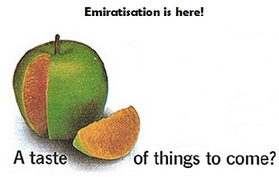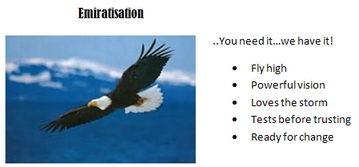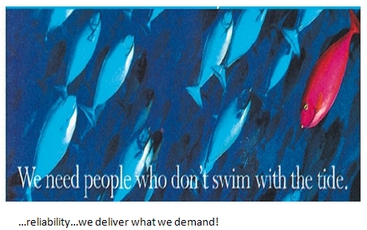Introduction
A detailed marketing communications plan for creating awareness about Emiratisation in the UAE will be presented in this report. Emiratisation is a policy introduced by the government of the UAE to increase the employment of Emiratis. Thus, the main objective of the campaign will be to create awareness about the capabilities of Emirati employees.
The report will begin with a discussion on the branding strategy that will be used during the campaign. This will be followed by a discussion on the promotional mix strategy for the campaign. The creative and media strategies will also be discussed. The budget and timeline for the campaign will be presented in the last part of the report.
Branding Strategy
The main objective of the Emiratisation campaign is to create a strong brand image for Emirati employees. In the last two decades, the government improved the skills of Emiratis through formal training and professional development. Thus, Emiratis are identified by their traits. Specifically, they are hard working, cooperative, ambitious, and open-minded employees. These characteristics differentiate Emiratis from other jobseekers in the UAE.
Brand Name
Emiratisation is a brand name that is informative and easy to remember. The name was derived from the word emirate, which refers to the seven administrative areas that constitute the UAE. In this context, the word implies that employees should be citizens of the UAE. The last part of the name (sation) urges employers to localise their workforce by employing Emiratis rather than expatriates.
In this regard, the name simply explains the main objective of Emiratisation. This enables employers to have a clear understanding of the benefits of the policy. As a result, companies in the private sector are increasingly implementing new human resource management policies to increase the number of Emiratis in their workforce.
Logo
Figure 1 shows the logo that will be used for the Emiratisation campaign. A sliced ripe orange has been used to represent Emiratisation and its benefits. The ripeness of the orange implies that Emiratisation is an idea whose time has come. The sweet taste of the orange signifies the benefits that employers will receive by employing Emiratis. The logo is meant to create curiosity so that the target audience can seek more information about the campaign.

Promotional Mix Strategy
Lectures
The main promotional tool that will be used to implement the Emiratisation campaign is giving lectures. This will involve visiting business and non-business organisations in various sectors of the economy to create awareness about the campaign among employees and employers. The lectures will focus on the social and economic benefits of increasing the number of Emiratis in the workforce.
The campaign team will also use the lectures to clarify the objective of Emiratisation. Specifically, they will explain to the employers that the aim of the campaign is to create a positive attitude towards Emirati employees rather than to deny expatriates employment opportunities. This will reduce or eliminate the resistance that the campaign is likely to face in the private sector, which is dominated by expatriates.
Special Events and Documentaries
Apart from visiting workplaces, the campaign team will use special events to give lectures to employers and employees. To begin with, the campaign team will organise seminars that will bring together employers and employees from different sectors of the economy.
The seminars will target small-scale employers who are difficult to reach on an individual basis. Undoubtedly, it will be very difficult to visit every small organisation due to time and financial constraints. This challenge will be eliminated through seminars that will facilitate access to a large number of the targeted employers. Employers are likely to attend the seminars to get the opportunity to network and promote their businesses.
The campaign team will also attend conferences and trade fairs that are regularly organised by various organisations to deliver the message about Emiratisation. The messages delivered through the lectures will be recorded and used to prepare documentaries that will be used for future reference.
Specifically, the documentaries will be presented on popular TV channels such as Abu Dhabi Al Oula, MBC 1, Zee TV, and BBC World. Similarly, the documentaries will be presented on the most listened to radio stations such as Hum FM and Abu Dhabi Radio. Documentaries are better than adverts in terms of ability to attract attention and to deliver the message effectively. The documentaries will reinforce the messages delivered through the lectures. They will also increase the number of people who will be reached by the campaign team.
Justifications
The use of lectures and documentaries is justified by the following reasons. First, lectures will facilitate direct delivery of the message to the target audience. Employers and employees are likely to attend lectures at their workplaces since it is convenient. Second, lectures will facilitate effective conversations between the campaign team and the target audience. Visiting the workplace or attending seminars and conferences will enable the campaign team to build strong relationships with employers. This will improve their ability to convince employers to employ Emiratis. As a result, the objective of increasing the employment of Emiratis by 40% will be easy to achieve.
Third, lectures will give employers the opportunity to ask questions about the capabilities of Emirati employees. Thus, the campaign team will get the opportunity to highlight the expertise of Emiratis, thereby reducing or eliminating the negative stereotypes about the citizens of the UAE. Finally, the documentaries will improve the image and reputation of Emiratis.
For instance, stories of Emiratis who have succeeded in their careers or personal businesses will be used to prove to the public that the citizens of the UAE have the experience, commitment, and technical skills that are required to succeed in any job. As employers develop a positive attitude towards Emiratis, the unemployment level among the citizens of the UAE will reduce significantly.
Creative Strategy
Message Appeal
Emirati employees will be positioned as experts with the right skill set and attitude to improve the competitiveness of their organisations. In this regard, the lectures will focus on creating the business case for employing Emiratis.
The messages that will be used to convince employers to employ Emiratis include the following. First, employing Emiratis will lead to improved productivity in every workplace. The modern Emirati employee is well educated and experienced in various business processes. Since Emiratis are open-minded, they can take any challenge and embrace new ideas at the workplace. This promotes ideation and innovation, which employers need to improve the performance of their businesses.
Second, employing Emiratis will facilitate economic growth and development. A reduction in the level of unemployment among Emiratis will lead to high aggregate consumption in the country.
As a result, employers will benefit from high demand for their goods and services. Moreover, a low unemployment rate among Emiratis will avert any social unrest that may disrupt businesses in the private sector. Finally, employing Emiratis will help employers to avoid the costs associated with failing to comply with the Emiratisation policy. For instance, employers will avoid hefty fines by employing the citizens of the UAE. They will also improve the image of their businesses in the country.
Campaign Slogans
The core messages discussed in the foregoing paragraphs will form the themes of the lectures. In addition, they will be incorporated in the slogans that will be used during the campaign. The slogans will be based on short sentences that will motivate employers to hire Emiratis. The slogans include the following.
The first slogan is ‘reliability…we deliver what we demand’. This slogan shows that Emiratisation is all about demanding for reliable job opportunities for Emiratis. Similarly, Emiratisation will deliver reliable and capable employees.
The second slogan is ‘you need it…we have it’. This slogan explains the fact that Emiratis have the expertise that employers need in order to succeed in the UAE. It shows that employing an Emirati is a source of competitive advantages.
The last slogan is ‘Emiratisation… the dawn of economic prosperity’. This sentence creates a mental imagery of the economic success that will be achieved through Emiratisation. It creates the feeling that Emiratisation will benefit everyone rather than just Emiratis.
Promotional Materials’ Appearance
Visual aids will be used during the lectures to improve the understanding of the audience. This will involve using pictures that link the messages to the capabilities of Emiratis and the needs of employers. Some of the visual aids that will be used are shown in figure 2 and 3.
Figure 2 portrays an Emirati as a motivated employee who is ready to do whatever it takes to achieve his/ her work targets. It links the capabilities of Emiratis to the principles that make an eagle (in the picture) successful in every environment. Specifically, no bird can fly as high as an eagle. Similarly, the performance of Emiratis in terms of productivity, commitment, and motivation is unparalleled.
Emirati employees have a clear vision and stay focused irrespective of the challenges they face in order to achieve their targets. Eagles like the storm and fly when the clouds gather. Similarly, Emiratis perceive problems as exciting challenges that provide opportunities for innovation and achieving unprecedented performance. An eagle tests her mates before trusting them. Similarly, Emiratis have honed their risk management skills to protect their employers’ businesses.


In figure 3, the pink fish depicts an Emirati employee as the only fish that swims against the tide. It signifies the differentiation that employers will achieve by employing Emiratis who are known for adopting innovative techniques to differentiate their companies in various industries.
Tactics
The following tactics will be used during the campaign. First, Emiratis who have succeeded in their careers in various sectors of the economy will be invited to participate in the lectures as guest speakers. They will share their life stories with the audience to prove to employers that Emiratis can make it in every career. The inspiration provided by the guest speakers is expected to change the perception that Emiratis are lazy, uncooperative, and lack adequate education.
Second, the campaign will include short training sessions to enable prospective employers to interact with select Emirati employees. In this case, fresh graduates and experienced Emirati employees will be assigned to large multinational corporations that are dominated by expatriates. The selected Emiratis will work in the assigned companies for three months. The training will give Emiratis the opportunity to demonstrate their expertise, thereby adding credibility to the Emiratisation campaign.
Finally, satisfied employers will be involved in the campaign. Employers will be invited to give testimonies concerning their satisfaction with the performance of Emiratis. The testimonies will motivate other employers to employ Emiratis.
Media Strategies
The media will be used to present the documentaries during the campaign. This will involve using popular TV and radio channels to present the documentaries at the appropriate time. The factors that justify the use of TV include the following. First, it will facilitate the use of both audio and visuals to convey the campaign message effectively.
The documentaries will be as effective as the lectures since the viewers will listen to and watch the presenters. This will improve the effectiveness of the campaign by enabling viewers to gain an in-depth understanding of the message. Second, TV channels will facilitate the use of creative tactics to deliver the message. As a result, the positive impact of the message on the audience will be great. Finally, collaborating with different TV channels will allow the campaign team to use both English and Arabic to reach as many people as possible.
The use of radio channels is justified by the following reasons. First, presenting the documentaries on radio is cost effective. Second, the messages that will be conveyed through radio channels will create mental imageries that will motivate employers to seek more information about Emiratisation. Finally, popular radio channels can reach a large number of employers who often spend a lot of time in their cars as they travel from one place to another.
The objective of using TV and radio channels will be to present the documentaries in early evening hours to reach 80% of the targeted audience at least twice a week over the next three years. The pulsing media scheduling strategy will be used to present the documentaries. Specifically, documentaries will be presented at regular intervals during the campaign period. Two documentaries (two on TV and two on radio) will be presented per month in every 3 months. However, lectures will be given every week.
Measurement
The effectiveness of the documentaries will be measured using the following techniques. To begin with, surveys will be used to determine the extent to which the viewers or listeners can recall the facts that will be presented in the documentaries. The viewership of the TV and radio channels will be monitored to determine the number of individuals reached by the documentaries.
The effectiveness of the lectures will be measured in two ways. First, surveys and interviews will be conducted every three months to collect information about employers’ attitudes towards Emiratis. The surveys will also help in determining whether employers can recall the information provided during the lectures. Second, the employment rate among Emiratis will be used as a measure of the effectiveness of the lectures. In this case, an increase in the percentage of employed Emiratis will indicate that the campaign is successful and vice versa.
Budget and Timeline
Budget
Since the campaign does not involve selling a good or service, using the percentage of sales approach to budgeting is not realistic. Thus, the budget for the campaign is purely based on the cost of implementing various activities as summarized in table 2. At least AED 3,250,000 will be required to run the campaign for three years.
Table 1: Budget
Timeline
The timeline for implementing the campaign activities is summarized in Gantt chart 1 and 2. The same schedule of activities will be used consistently during the campaign period.
Gantt chart 1: Media plan (January to June)
Gantt chart 2: Media plan (July to December)
Conclusion
The branding strategy that will be used in the campaign will involve improving the image and reputation of Emirati employees so that they can be employed. The campaign will be conducted through lectures that will be delivered at workplaces, seminars, and conferences. The lectures will also be available as documentaries. The creative strategy will involve using visual aids during the lectures to improve the understanding of the audience. Moreover, successful Emiratis and satisfied employers will give testimonies during the lectures to influence the public to develop a positive attitude towards Emirati employees.